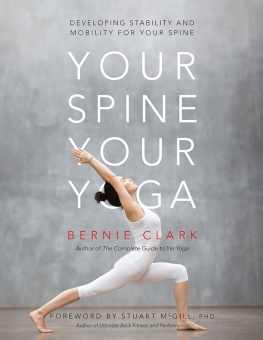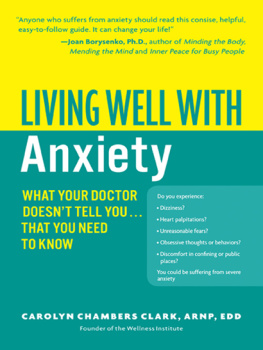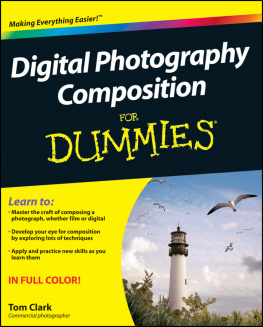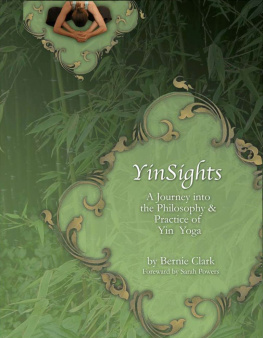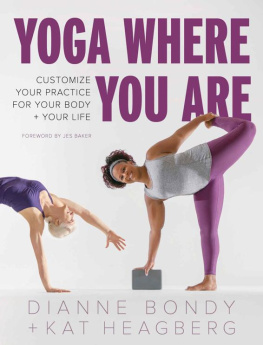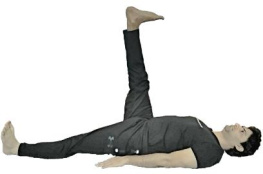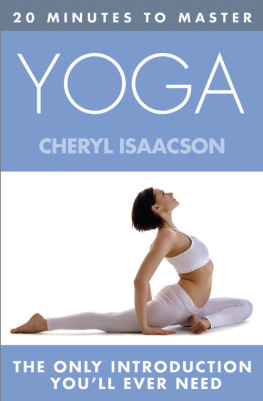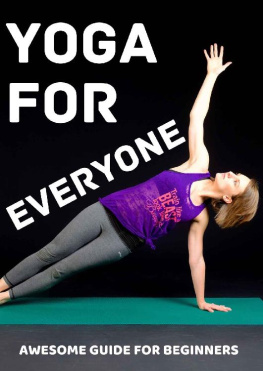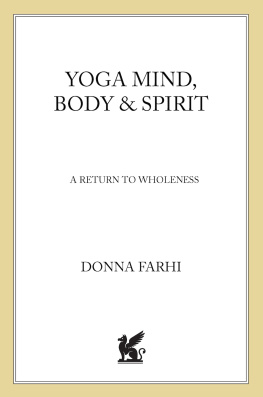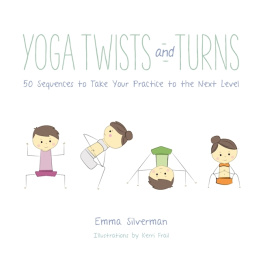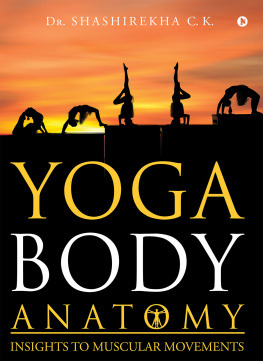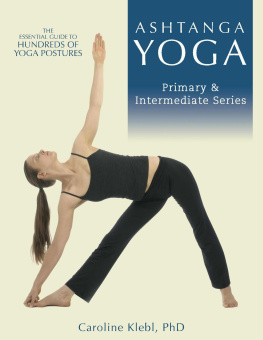One of the overarching intentions of this book is to help educate yoga students and teachers on the reality of human variation and its impact on range of motion. There is no attempt to offer any original research or to address an academic audience. Where practical, citations for studies, claims and statistics are provided in the endnotes. In the process of illustrating complex topics, some liberties have been taken with strict academic diligence. Except where specifically noted, the most extreme examples of human variations are rarely cited; rather, we look at the range of variations most likely to show up in 95% of the students attending a yoga class. Where simplicity has been chosen over thoroughness, it has not been at the expense of accuracy or truthfulness.
All rights reserved. Copyright 2022 by Bernie Clark. No part of this book may be reproduced or transmitted in any form or by any means whatsoever, including graphic, electronic, or mechanical, including photocopying, recording, taping, or by any information storage or retrieval system, without permission from the publisher. Inquiries should be addressed to:
Editor: Dania Sheldon. Cover and interior design by Alex Hennig.
Front cover photo by PixieMe from Adobe Stock, file #218718670
Back cover photo by Rh2010 from Adobe Stock, file #252564539
Illustrations by Morgan Jeske, unless otherwise indicated. Printed in the U.S.A.
Medical disclaimer
The contents of this book are intended for general information only and not as specific medical advice. Please check with your health-care provider before following any suggestions found herein. The guidance given in this book is not meant to replace medical advice and should be used only as a supplement if you are under the care of a health-care professional. When you are not sure of any aspect of the practice, or feel unwell, seek medical advice.
To my family, friends and teachers.For what is life without the support of loved ones? Even those who are no longer with us still inspire and move us through their presence in our memories. Even when our memories of them fail, their influence shaped us into who we are. We are but the continuation of all who have touched us.
Foreword
Within these pages youll discover an adventurous journey through the upper body, encompassing the full spectrum of anatomy essentials. Youll find enormous detail, intuitive organization, key facts, significant discussions, and small doses of perfectly placed humor and wit. While most textbooks dont read easily from cover to cover, this one is a unique exception.
Teaching anatomy to yoga teachers is a complicated endeavor. Unlike anatomy students at university, where the process is mostly memorization, yoga teachers like context and purpose. College students study anatomy as a requisite for greater, more encompassing fields of study. Yoga teachers tend to only be exposed to short bursts of anatomy lessons and are often left wondering why its relevant and how it applies. Bernie Clark elevates the importance of anatomy and entices his readers to care.
Your Upper Body, Your Yoga (YUBYY) uniquely teaches anatomy through the lens of yoga. This creates an opportunity for the reader to engage in the lessons in an interesting and useful way, opening the doors for curiosity and questions within a familiar framework. Resources that, conversely, teach yoga through the lens of anatomy tend to be more effective for those who already have a strong anatomy education from a previous career or course of study. Bernies approach makes no assumptions and encourages teachers with any background to appreciate just one more piece of anatomy knowledge.
In my years of teaching biomechanics to yoga teachers, I have seen and read a lot of anatomy books. In most, youll find that common terms are defined one way, while biomechanists often define them differently. YUBYY is a resource that gently toes the line between these two fields of study, minimizing confusion for readers who are exposed to contradictory messages. It is well balanced and packed with solid information about what we know, what we dont know, and which debates actually matter. YUBYY pulls from both disciplines as needed to guide yoga teachers to normalize human variation and avoid universal rules, while offering practical tips for teaching multiple students with differing anatomical presentations.
Special recognition goes to Bernie for emphasizing and respecting biological complexity. He cautiously explores emerging perspectives within the biotensegrity model. He shares non-catastrophizing views around the poses and how we teach them. He thoroughly explains range of motion and its limitations without romanticizing its importance. He is impeccably detailed at every level yet manages to successfully avoid detail overload. Lastly, readers of YUBYY will sense Bernies patient and supportive character, which nurtures the experience of learning this rich and difficult subject.
Jules Mitchell MS, LMT, RYT
Yoga Educator
Research & Adjunct Faculty at Arizona State University
Author of Yoga Biomechanics: Stretching Redefined
www.JulesMitchell.com
Gratitude
Paul Grilleys DVD Anatomy for Yoga was released in late 2003. I remember Shakti Mhi, the owner of the Prana Yoga and Zen Centre, where I was teaching, telling all the teachers that we had to watch it. It was groundbreakinga pivotal shift in the paradigm of teaching yoga. Within a year, I had met Paul and Suzee Grilley, thanks to first meeting Sarah Powers and resolving to study with both her and Paul. In 2009, Paul and I discussed a collaborative writing project centering around a book documenting human variations and their importance for both yoga students and their teachers. While Paul thought the idea had merit, he already had many plans in place to explain human variations within a paradigm of 14 archetypal yoga postures. His preferred vehicles for these explorations were videos, owing to how well that format could show variations between students. The idea of a book faded away, but the thought still remained buried in my unconscious mind.
During the years 2010 to 2013, I brought two other books into being: The Complete Guide to Yin Yoga, which was an updated and shorter version of the 2007 YinSights, and From the Gita to the Grail (since renamed Shiva Dancing at King Arthurs Court), a look into the psychological aspects of yoga and meditation throughout the ages. With the completion of these projects, the old idea of writing a detailed investigation of human variation and its importance for yoga practice resurfaced.
In September of 2013, another opportunity arose to study with Paul and Suzee: a 15-day retreat held at the Land of Medicine Buddha, in California. This was the chance to map out a new project, one that would ultimately take eight years and a thousand pages. Had I known then what I was undertaking, I probably would not have started this journey, but with the encouragement of Paul, Suzee and Sarah, along with all the participants at the retreat, I took the first steps towards what would become the Your Body, Your Yoga trilogy. The students at the retreat graciously allowed me to document their variations, sometimes via photographs and at other times through descriptions of their own experiences. My thanks go to all who attended and helped me get started: Anna Aalten, Leslie Anthony, Jen Ball, Helga Baumgartner, Amanda Dawn Blackley, Muriel Burellier, Laura Burke, Stephanie Calhoun, Rich Clarke, Perry Cohen, Devi Daly, Cynthia Davis, Leigh Drake, Emilie Fabre, Amos Feakes, Julian Hall, Danielle Hoogenboom, Douglas Johnson, Tina Lanzoni, Maheshwara (Manfred) Lehner, Dace Osleja, Sebastian Pucelle, Barbara Samorajczyk, Karin Michelle Sang, Debby Sereda, Johanna Sundqvist, Donna Wiggins and Karma Wilner.

